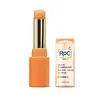What's inside
What's inside
 Key Ingredients
Key Ingredients

 Benefits
Benefits

 Concerns
Concerns

 Ingredients Side-by-side
Ingredients Side-by-side

C13-15 Alkane
SolventWater
Skin ConditioningCocoglycerides
EmollientHelianthus Annuus Seed Wax
Skin ConditioningButylene Glycol
HumectantAcrylates Crosspolymer
AbsorbentPolyhydroxystearic Acid
EmulsifyingTetrahexyldecyl Ascorbate
AntioxidantBis-Behenyl/Isostearyl/Phytosteryl Dimer Dilinoleyl Dimer Dilinoleate
EmollientPolyglyceryl-4 Oleate
EmulsifyingCetearyl Olivate
Polyglyceryl-6 Oleate
EmulsifyingHelianthus Annuus Seed Oil Unsaponifiables
EmollientTroxerutin
Skin ConditioningCalcium Aluminum Borosilicate
Diisostearyl Malate
EmollientGluconolactone
Skin ConditioningSorbitan Olivate
EmulsifyingTocopheryl Acetate
AntioxidantSodium Benzoate
MaskingSodium PCA
HumectantMaltodextrin
AbsorbentCistus Incanus Flower/Leaf/Stem Extract
Skin ConditioningHaematococcus Pluvialis Extract
AntioxidantOctyldodecanol
EmollientCalcium Gluconate
HumectantMalic Acid
BufferingPentaerythrityl Tetraisostearate
EmollientTocopherol
AntioxidantAstaxanthin
Skin ConditioningCaprylic/Capric Triglyceride
MaskingPropylene Carbonate
SolventStearalkonium Hectorite
Gel FormingPalmitoyl Hexapeptide-12
Skin ConditioningCI 77491
Cosmetic ColorantC13-15 Alkane, Water, Cocoglycerides, Helianthus Annuus Seed Wax, Butylene Glycol, Acrylates Crosspolymer, Polyhydroxystearic Acid, Tetrahexyldecyl Ascorbate, Bis-Behenyl/Isostearyl/Phytosteryl Dimer Dilinoleyl Dimer Dilinoleate, Polyglyceryl-4 Oleate, Cetearyl Olivate, Polyglyceryl-6 Oleate, Helianthus Annuus Seed Oil Unsaponifiables, Troxerutin, Calcium Aluminum Borosilicate, Diisostearyl Malate, Gluconolactone, Sorbitan Olivate, Tocopheryl Acetate, Sodium Benzoate, Sodium PCA, Maltodextrin, Cistus Incanus Flower/Leaf/Stem Extract, Haematococcus Pluvialis Extract, Octyldodecanol, Calcium Gluconate, Malic Acid, Pentaerythrityl Tetraisostearate, Tocopherol, Astaxanthin, Caprylic/Capric Triglyceride, Propylene Carbonate, Stearalkonium Hectorite, Palmitoyl Hexapeptide-12, CI 77491
Octyldodecanol
EmollientNeopentyl Glycol Diheptanoate
EmollientPropylene Glycol Dicaprylate/Dicaprate
EmollientDicaprylyl Carbonate
EmollientSqualane
EmollientIsopropyl Isostearate
EmollientDibutyl Lauroyl Glutamide
Skin ConditioningCaprylic/Capric Triglyceride
MaskingDibutyl Ethylhexanoyl Glutamide
Skin ConditioningCucumis Sativus Fruit Extract
EmollientCucumis Sativus Seed Oil
EmollientSodium Hyaluronate
HumectantTocopherol
AntioxidantCamellia Sinensis Leaf Extract
AntimicrobialCananga Odorata Flower Extract
PerfumingCucumis Melo Fruit Extract
Skin ConditioningCucumis Melo Cantalupensis Fruit Extract
AstringentJasminum Officinale Flower/Leaf Extract
MaskingPyrus Malus Fruit Extract
Skin ConditioningRose Extract
Skin ConditioningRicinus Communis Seed Oil
MaskingRosmarinus Officinalis Leaf Extract
AntimicrobialLavandula Angustifolia Flower/Leaf/Stem Extract
MaskingEthylhexyl Palmitate
EmollientCoffea Arabica Seed Extract
MaskingOryza Sativa Bran Extract
Skin ConditioningTribehenin
EmollientHelianthus Annuus Extract
EmollientSorbitan Isostearate
EmulsifyingCaffeine
Skin ConditioningPalmitoyl Tripeptide-1
Skin ConditioningRubus Idaeus Fruit Extract
AstringentSalvia Officinalis Leaf Extract
CleansingSantalum Album Wood Extract
PerfumingHelianthus Annuus Seed Wax
Skin ConditioningPhenoxyethanol
PreservativeCI 42090
Cosmetic ColorantMica
Cosmetic ColorantCI 60725
Cosmetic ColorantOctyldodecanol, Neopentyl Glycol Diheptanoate, Propylene Glycol Dicaprylate/Dicaprate, Dicaprylyl Carbonate, Squalane, Isopropyl Isostearate, Dibutyl Lauroyl Glutamide, Caprylic/Capric Triglyceride, Dibutyl Ethylhexanoyl Glutamide, Cucumis Sativus Fruit Extract, Cucumis Sativus Seed Oil, Sodium Hyaluronate, Tocopherol, Camellia Sinensis Leaf Extract, Cananga Odorata Flower Extract, Cucumis Melo Fruit Extract, Cucumis Melo Cantalupensis Fruit Extract, Jasminum Officinale Flower/Leaf Extract, Pyrus Malus Fruit Extract, Rose Extract, Ricinus Communis Seed Oil, Rosmarinus Officinalis Leaf Extract, Lavandula Angustifolia Flower/Leaf/Stem Extract, Ethylhexyl Palmitate, Coffea Arabica Seed Extract, Oryza Sativa Bran Extract, Tribehenin, Helianthus Annuus Extract, Sorbitan Isostearate, Caffeine, Palmitoyl Tripeptide-1, Rubus Idaeus Fruit Extract, Salvia Officinalis Leaf Extract, Santalum Album Wood Extract, Helianthus Annuus Seed Wax, Phenoxyethanol, CI 42090, Mica, CI 60725
 Reviews
Reviews

Ingredients Explained
These ingredients are found in both products.
Ingredients higher up in an ingredient list are typically present in a larger amount.
This ingredient is an emollient, solvent, and texture enhancer. It is considered a skin-softener by helping the skin prevent moisture loss.
It helps thicken a product's formula and makes it easier to spread by dissolving clumping compounds.
Caprylic Triglyceride is made by combining glycerin with coconut oil, forming a clear liquid.
While there is an assumption Caprylic Triglyceride can clog pores due to it being derived from coconut oil, there is no research supporting this.
Learn more about Caprylic/Capric TriglycerideHelianthus Annuus Seed Wax is created from the common sunflower.
Sunflower seed wax is made up of long chain non-glyceride esters, a small amount of fatty alcohols, and fatty acids.
This ingredient is often used to enhance the texture of products. The fatty acid properties also help hydrate the skin.
Learn more about Helianthus Annuus Seed WaxOctyldodecanol is a fatty alcohol. It is primarily used to enhance the texture of products.
As an emulsifier, Octyldodecanol helps prevent the oils and waters from separating. It also prevents ingredients from creating foam when shaken.
Octyldodecanol is created by reducing fatty acid to an alcohol.
Due to its high molecular weight, it does not get absorbed into the skin.
Learn more about OctyldodecanolTocopherol (also known as Vitamin E) is a common antioxidant used to help protect the skin from free-radicals and strengthen the skin barrier. It's also fat soluble - this means our skin is great at absorbing it.
Vitamin E also helps keep your natural skin lipids healthy. Your lipid skin barrier naturally consists of lipids, ceramides, and fatty acids. Vitamin E offers extra protection for your skin’s lipid barrier, keeping your skin healthy and nourished.
Another benefit is a bit of UV protection. Vitamin E helps reduce the damage caused by UVB rays. (It should not replace your sunscreen). Combining it with Vitamin C can decrease sunburned cells and hyperpigmentation after UV exposure.
You might have noticed Vitamin E + C often paired together. This is because it is great at stabilizing Vitamin C. Using the two together helps increase the effectiveness of both ingredients.
There are often claims that Vitamin E can reduce/prevent scarring, but these claims haven't been confirmed by scientific research.
Learn more about Tocopherol